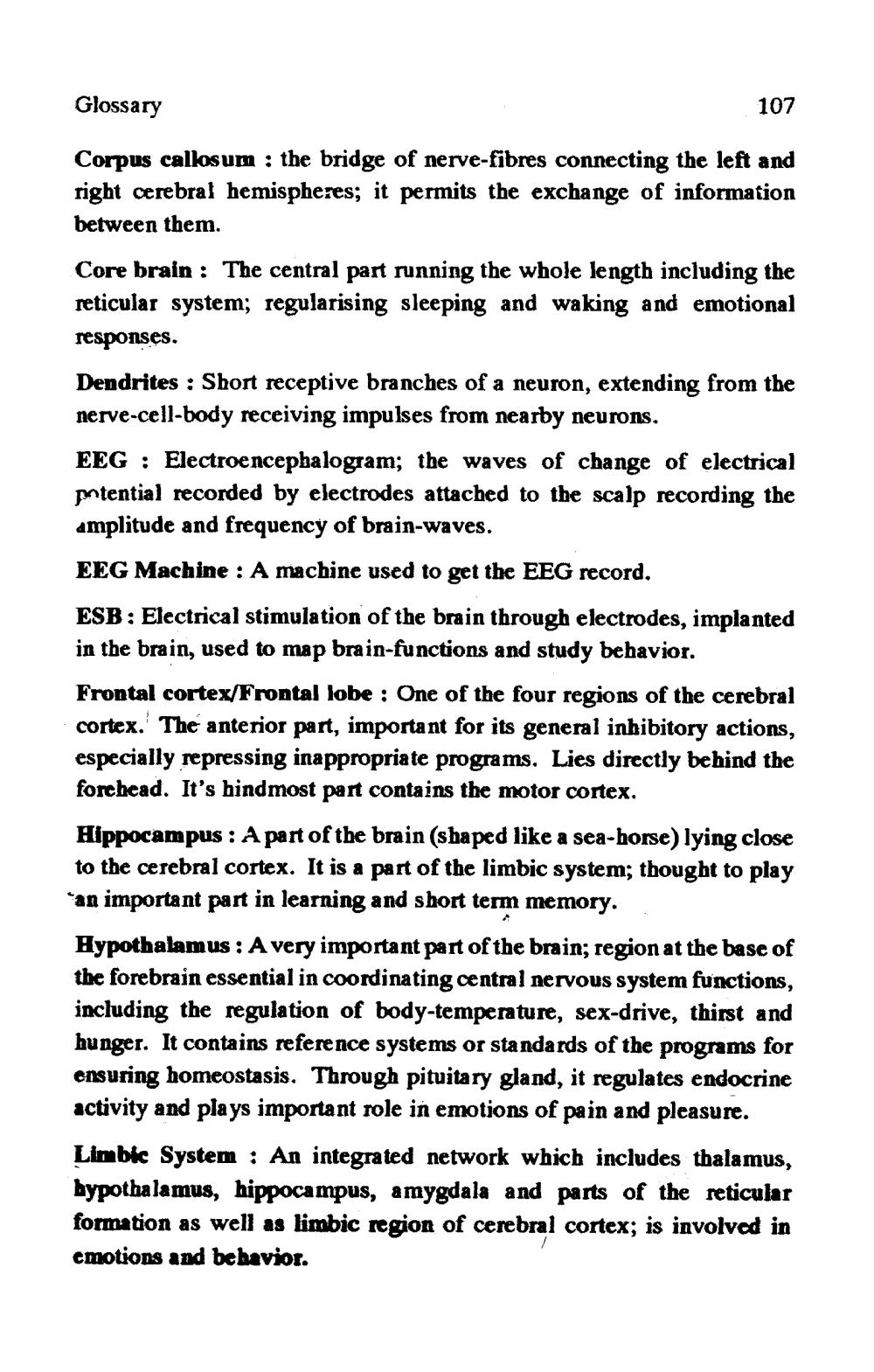________________
Glossary
107
Corpus callosum : the bridge of nerve-fibres connecting the left and right cerebral hemispheres; it permits the exchange of information between them.
Core brain : The central part running the whole length including the reticular system; regularising sleeping and waking and emotional responses.
Dendrites : Short receptive branches of a neuron, extending from the nerve-cell-body receiving impulses from nearby neurons. EEG : Electroencephalogram; the waves of change of electrical pntential recorded by electrodes attached to the scalp recording the amplitude and frequency of brain-waves. EEG Machine : A machine used to get the EEG record. ESB : Electrical stimulation of the brain through electrodes, implanted in the brain, used to map brain-functions and study behavior. Frontal cortex/Frontal lobe : One of the four regions of the cerebral cortex.' The anterior part, important for its general inhibitory actions, especially repressing inappropriate programs. Lies directly behind the forchead. It's hindmost part contains the motor cortex. Hippocampus : A part of the brain (shaped like a sea-horse) lying close to the cerebral cortex. It is a part of the limbic system; thought to play 'an important part in learning and short term memory. Hypothalamus : A very important part of the brain; region at the base of the forebrain essential in coordinating central nervous system functions, including the regulation of body-temperature, sex-drive, thirst and hunger. It contains reference systems or standards of the programs for ensuring homeostasis. Through pituitary gland, it regulates endocrine activity and plays important role in emotions of pain and pleasure. Limbic System : An integrated network which includes thalamus, hypothalamus, hippocampus, amygdala and parts of the reticular formation as well as limbic region of cerebral cortex; is involved in cmotions and behavior.




